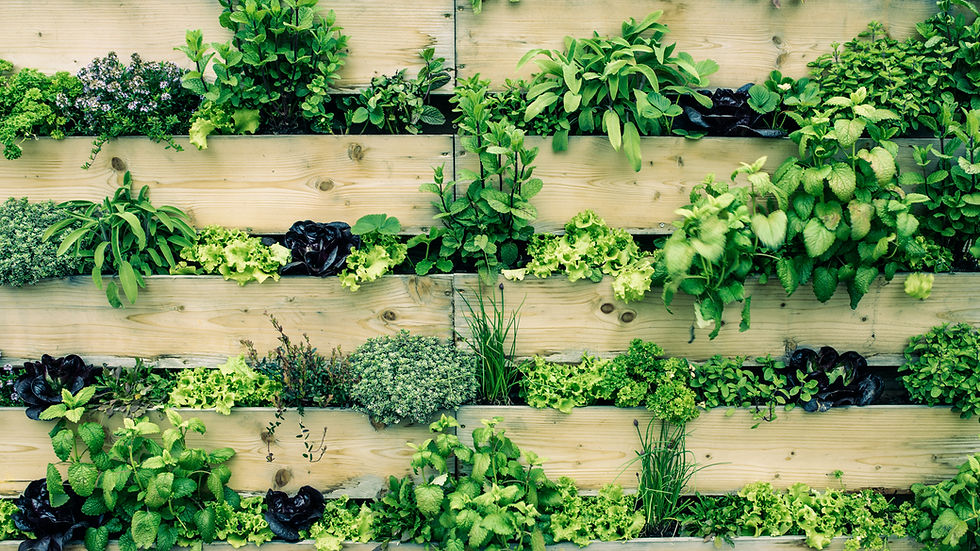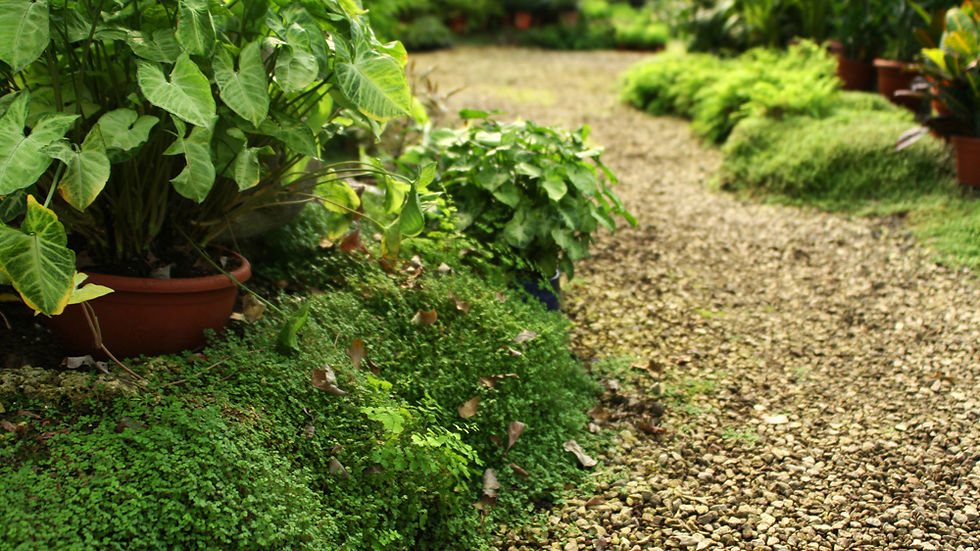How to Design an Edible Landscape That Works Beautifully and Tastes Even Better
- Kristen Benge
- Aug 18
- 4 min read
Updated: Sep 8
Creating a Yard That Nourishes: The Art of Edible Landscaping
================================================================
Guest blogger: Roger Bayless

Creating a yard that’s both visually stunning and full of things you can eat isn’t just a clever gardening trick. It’s a mindset shift. You’re transforming your outdoor space into something that feeds more than just the eyes. For homeowners interested in functionality without sacrificing curb appeal, edible landscaping is a practical way to turn traditional yard design into a self-sustaining, dynamic ecosystem. Think of it as gardening with taste—literally and aesthetically.
Why Edible Landscapes Are Worth It
Edible landscapes do more than reduce your grocery bill. They lower food miles, support biodiversity, and foster ecological resilience. But let’s keep it personal: they also create moments. Imagine a child plucking strawberries on the way to school. Picture dinner guests reaching down to pick mint for their iced tea. These aren’t just plants—they’re experiences.
When designed well, edible landscapes bring the layered structure and cohesion you'd find in a professional ornamental garden. That’s what makes the concept of a sustainable food forest garden so powerful. It’s less about novelty and more about resilience. You’re creating beauty with backbone—functionality that evolves over time.
Planning Layers and Design Structure
Good edible landscaping doesn’t happen with a few seed packets and a Pinterest board. You need structure. This begins by mimicking natural ecosystems, using vertical space and functional layering.
Ground Covers: Consider thyme and creeping oregano.
Mid-height Workhorses: Think kale, chard, or strawberries.
Taller Shrubs: Blueberries can add height.
Anchoring Trees: Figs or apples can serve as focal points.
Understanding these layers helps your garden breathe. It creates microclimates, reduces water use, and visually balances scale and density. Thoughtful design starts with planning the other layers in a food forest, not just picking what’s edible. When these decisions are made early, maintenance becomes easier—and the garden tells a clearer story from curb to patio.
Budgeting for an Edible Landscape
Designing a visually rich and productive garden starts with knowing what you can realistically afford. From raised beds to starter plants to irrigation systems, costs can pile up quickly if you’re not tracking them. Seasonal budgeting gives you clarity—helping you stagger purchases, spot overages, and stay aligned with your garden plan.
Whether you’re planting for one season or four, using a printable or digital worksheet can help you map expenses before they get out of hand. To set up your own garden budget system, click here for more.

Mixing Ornamentals and Edibles
This is where the real fun happens. Don’t think of edibles as a separate “section.” Integrate them like any other design element.
Purple Basil beside coral zinnias.
Variegated Sage paired with lamb’s ear.
Swiss Chard’s neon stems next to lavender’s muted silver.
It’s not about compromise—it’s synergy. Start by selecting varieties that match your color palette, then map out where form and function intersect. Leafy greens can fill beds. Fruiting vines can cloak a trellis. And mixing edibles with ornamentals keeps things vibrant without feeling utilitarian.
Space-Saving Vertical & Containers
You don’t need acreage to do this well. You need vertical ambition. Containers and climbing structures unlock opportunities in small spaces or patio-heavy lots.
Beans on trellises.
Cucumbers on arches.
Strawberries tumbling from hanging pots.
It’s about using every cubic foot with intention. When space is tight, stacking functions becomes crucial. A small bench might double as a planter box. A shade-providing arbor might host grapevines. Knowing how to build a vertical garden can make even the narrowest courtyard feel productive and lush. These upright structures also break visual monotony, acting like punctuation marks in the garden’s grammar.

Color, Texture & Year-Round Interest
Seasonality can make or break visual impact. A summer-heavy garden might look tired come October. That’s why you design with time as a material. Choose edibles that keep their form after harvest or double as ornamental anchors.
Artichokes have architectural drama.
Red Mustard adds moody texture.
Blueberry Shrubs offer blazing fall foliage.
The trick is to balance edibles that have a short growing season with edibles that are evergreen or offer off-season interest. Don’t underestimate the visual power of texture, either. Smooth kale beside ruffled parsley. Upright garlic chives next to the roundness of cabbage. These aren’t just crops—they’re shapes and rhythms.
Hardscape & Pathway Integration
Think beyond the plants. Your paths, walls, and furniture either support the flow—or interrupt it. A winding stone path creates mystery. A raised bed edged in cedar keeps lines clean and defined. Gravel walkways add auditory texture, a crunch underfoot that signals purpose.
These design choices also affect maintenance and accessibility. Use them to frame key views, direct traffic, and provide resting moments. Smart hardscape isn’t just about aesthetics—it’s utility, too. Knowing how to optimize space with raised beds and containers gives you deeper soil, better drainage, and tighter visual control.

The Joy of Edible Landscaping
Designing an edible landscape isn’t about becoming a homesteader or ditching the joy of flowers. It’s about replacing arbitrary choices with intentional ones. Every plant has a job—whether that’s feeding the bees, shading your patio, or landing on your dinner plate. The result? A landscape that tells a richer story. One rooted in nourishment, not just aesthetics. A garden you walk through, touch, harvest, and admire.
Discover the joy of gardening with *Grow Veggie Plants, your go-to source for quality plants, expert tips, and a thriving community of passionate gardeners. Let’s grow together

Comments